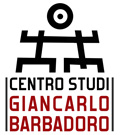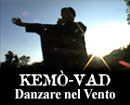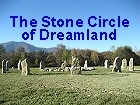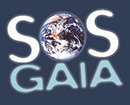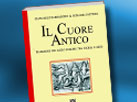|
by Catherine Saez
World Intellectual Property Organization member states in July concluded the biennium work of the committee tasked with finding agreement on international legal tools to prevent misappropriation and misuse of genetic resources, traditional knowledge and folklore.
Indigenous peoples and local communities are holders of a substantial part of this knowledge and are demanding that it be protected against misappropriation but also against its use without their consent.
Intellectual Property Watch conducted two interviews with different indigenous groups attending the 15-24 July WIPO Intergovernmental Committee on Intellectual Property and Genetic Resources, Traditional Knowledge and Folklore (IGC) (IPW, WIPO, 25 July 2013). The IGC is working on the protection of genetic resources (GR), traditional knowledge (TK), and traditional cultural expressions (TCEs or folklore) against misappropriation mainly by commercial interests. Other concerns include knowledge that has been claimed for collection purposes, or research, or has been used for a long time and is considered part of the public domain.
Indigenous peoples’ groups have said that the public domain was basically created at the same time as the concept of intellectual property and their particular knowledge had been put in that public domain, by default, without their consent.
Preston Hardison, policy analyst representing the Tulalip Tribes, Jim Walker of the Foundation for Aboriginal and Islander Research Action (Australia), and Ronald Barnes of the Indian Council of South America answered questions about the protection of traditional knowledge, on the issue of the public domain, and what would be an optimum result of the IGC.
“I work for a tribe of 4,600 people, on a very small 6 mile square reservation. They’ve lost 90 percent of their land. They are surrounded by a sea of non-indigenous peoples. Their habitat has been fragmented. When they reserved their treaties they reserved a lot of ‘off reservation rights’,” said Hardison.
“They have this small reservation but they get to hunt and gather fish all around because they knew the reservation was going to be too small to sustain them,” he said. “But now all these lands are getting fragmented, polluted, broken up, rolled over by cities and urbanization, [and] climate change is causing species to move away from their territories, invasive species are coming in.”
The whole IGC discussion started with the problem of biopiracy, he said, and how to protect knowledge from being patented. “However the problem in the IP system, is that the best way to protect against patents is through the public domain because that is prior art.”
“What we very quickly found out is that this defensive approach was not helping us because the patent problem is really just a problem of temporary monopoly and the solution was for us to permanently lose control of our knowledge by putting it in the public domain.”

|
There are also issues when the knowledge is a pathway to discover the natural resources, “so people discover the value of cultural heritage through the traditional knowledge but the resource itself may not be protected,” Hardison said. “By solving the patent problem, by making your knowledge available, you may have opened yourself up to petty exploitation, to non-monopolistic exploitation.”
“The main problem is not the monopoly [inherent in a patent],” he said. “It is people finding out what the value of our medicinal plants is and coming and taking every single one they can find.”
Ronald Barnes, of the Indian Council of South America told Intellectual Property Watch: “When we talk about protection we want protection against exploitation so that the protection remains in the control of the holders of TK and the owners so that their right to self-determination is recognized and respected.” People wanting to use the knowledge “have to register and let us know how they acquired it and how they are using it. Perhaps if it is sacred we don’t want it to be developed,” he specified. “Sometimes we try to keep it close to ourselves but it leaks out. There is always a way to go to one person and compensate that one person and then they say we have acquired this from you and now we have the right to develop it but it is still our collective property.”
Colonizers put Traditional Knowledge in the Public Domain
There are some stewardship obligations that go with the knowledge, Hardison said. “When you receive it you don’t receive it freely to do whatever you want with it, you have obligations to the land, to whatever it is referring, to the spirits or the ancestors. This is a real problem with the public domain. Tribes have often shared their knowledge in the past but they shared it with people who had similar views and concepts and understood these obligations. But now we are in this world with 7 billion people on the internet.”
“If we decide to exchange knowledge, the problem is that the public domain exhausts all of our rights. It destroys the stewardship obligations that go with the knowledge,” he said.
Some of the indigenous peoples’ knowledge has been in the public domain for a long time, he explained, and allowed to be accessed for all these years, “but we never agreed to that,” he insisted. “We are not looking for monetary compensation but looking get the recognition of our right to control access.”
“We’ve held our traditional knowledge for thousands of years. It is ours,” said Barnes. “Then comes another peoples and we are colonised, why should we be held to a limitation to the knowledge control and the right to protect it?”
Optimum outcome of the IGC, carveout from Public Domain
One outcome of the IGC would be the identification of certain kinds of TK associated with GR, TK and TCEs that could be protected in perpetuity, some carved out of the public domain, said Hardison. “We don’t think all can, and we are open to discussion on what is protectable and what is not.”
“We are interested in creation and creativity too and some tribes and indigenous peoples would like to engage in this and some won’t, that is their business,” said Hardison. “For those who engage in it we don’t want the price of that to be the public domain, and that’s how it works.”
In the world system today, “there are very few examples of intangible cultural heritage laws which treat our knowledge in this holistic way,” Hardison said, adding, “what we have is IP law.”

|
“Our problem is if we ever exchange knowledge with an outsider in any way, the second we exchange it, it falls within the IP regime. We’ve never had a chance to negotiate that. We are not considered in the Berne convention [Berne Convention for the Protection of Literary and Artistic Works], or any other WIPO conventions,” he noted.
“We know all cannot be protected but we want a regime to respect our rights where it can, and have that discussion about what can be protected and what can’t. We never put it in the public domain. That was the colonizers who put it in there for us.”
Common thread, but common positions hard to achieve
“We might have different views on how we might get there, to achieve certain outcomes,” said Walker.”Circumstances might be different in different countries.”
“Some issues are easier than others,” said Hardison, Part of the problem is financial support, he said. Indigenous groups “are only funded for the minimum amount of time,” he said. “For example, we get three hours on Sunday before the meeting to meet together. That is not a lot of time to start working out common positions, especially on the kind of things that we have now.”
“It has gotten better now that we have translation, generally,
coordinated by DoCip (Indigenous Peoples’ Center for Documentation, Research and Information),” he said. “But it is still hard to talk cross-culturally.”
“You need to have the resources back at home,” said Walker. “Getting prepared for those meetings is very difficult because generally you have your other obligations to your organization or to the people back home. Often you don’t have the time or the resources to get around and start consulting everyone to get a unified view or to get other opinions or inputs,” Walker said.
Barnes said that getting a common view was a tough exercise. “Whether or not we like it, we have some indigenous peoples who are paid more, given more funds and they are more willing to cooperate, whereas some of us refuse those funds and they want to retain their property.”
www.intercontinentalcry.org
|


 -->
-->




